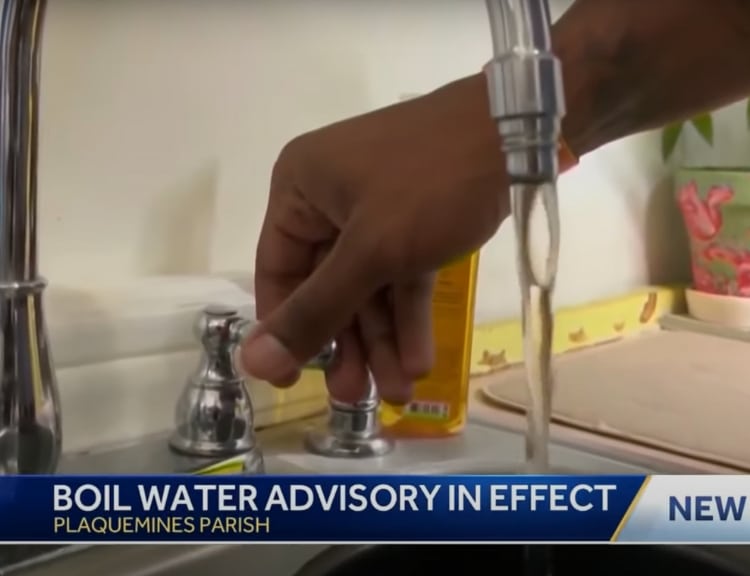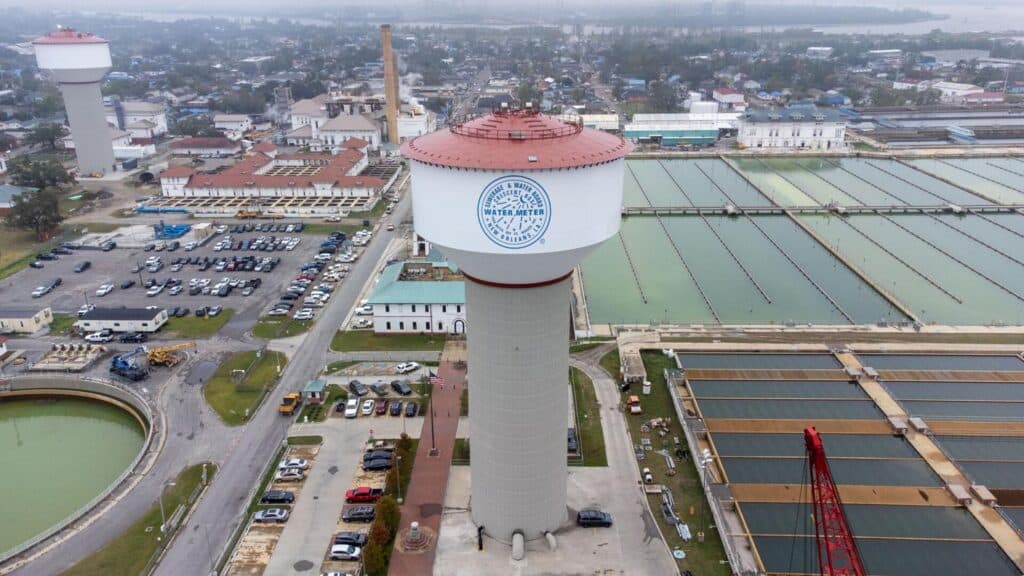This article was originally published on WDSU 6 News.
NEW ORLEANS — The New Orleans Sewerage and Water Board announced that the utility is on track to begin replacing lead pipes ahead of a deadline set by the Environmental Protection Agency.
The S&WB and BlueConduit launched the city’s first water service line material inventory. You can view that here.
“We are proud to lead the effort in removing lead service lines throughout our city, and this inventory is a crucial first step,” said Ghassan Korban, SWBNO’s executive director, in an issued statement. “Our customers and visitors deserve a lead-free water system, and we are pulling together all the resources possible to get us there.”
Customers can search the inventory for their address to check if their public and private water service lines are lead, non-lead, galvanized requiring replacement, or unknown, according to the S&WB.
The utility said the inventory has two types of data: verified service line materials and unknown service line materials.
“Verified service line materials” means the S&WB has a record of the water service line material.
“Unknown service line materials” means the utility does not have a record of the water line material.
According to the S&WB, the resource uses predictive modeling to determine the type of line.
The SWBS said the predictive model was approved by the Louisiana Department of Health based on existing plumbing records, lead test kit results, meter install date, parcel data, and census data.
According to the S&WB, roughly 15,000 customers have lead pipes that need to be replaced.
The S&WB said 119,000 customers have unknown pipe materials.
Customers with lead, galvanized steel, or unknown service lines will be notified in the coming weeks.
The S&WB will also begin verifying unknown water lines, starting with schools.
The utility hopes to begin these inspections in November, which is ahead of the EPA’s Lead and Copper Rule Improvement deadline set for 2027.
The S&WB will search for a contractor to manage the lead pipe replacement program later this year. The utility will begin replacing lines in 2025. The EA requires replacements to begin in 2027 and establishes a 10-year deadline.
According to the S&WB, the utility already has $86 million in funding for the effort, as well as additional funding from the state.
The S&WB is also looking into utilizing funding opportunities through the EPA.
“NOHD recognizes the urgent need to investigate and remediate lead pipes in our community,” said Dr. Jennifer Avegno, the New Orleans Health Department director, in an issued statement. “The Sewerage and Water Board’s inventory will help residents understand their exposure, and the $86 million award is a crucial first step to begin the process of citywide remediation. We look forward to supporting these efforts and working with federal, state, and nonprofit partners to create a healthier community.”
Many older cities like New Orleans have lead service lines within their drinking water system since lead was a commonly used plumbing material before its use was banned in the industry in 1986, according to the S&WB.
There is no detectable lead in the water that leaves SWBNO’s treatment plants. However, lead can enter drinking water through lead service lines and fixtures in plumbing, according to the utility.
“As a drinking water utility that prioritizes public health, SWBNO recognizes the risk lead poses to our customers,” said Korban in an issued statement. “That’s why we’ve been taking measures to protect our customers for years, including effective corrosion control as well as ongoing water testing across the system.”
The EPA provided the following tips for those wishing to take extra precautions surrounding lead pipes:
- Use only cold water for drinking, cooking, and making baby formula.
- Flush the pipes. When water hasn’t been used for six hours or longer, run the faucet for three to five minutes to flush the lines before drinking or cooking with the water. Household tasks like showering or running the dishwasher can also help flush the system.
- Request a water test kit by contacting SWBNO’s Lab at (504) 865-0420 or click here to use our online request form.
- Request to pick up a water pitcher that filters for lead by calling 52-WATER or click here to use our online request form.
- Use a filter that meets NSF Standard 53 as a recommended practice to help protect you and your family.
- If you have a lead service line on your property, replace it. SWBNO can coordinate to replace the public side of the lead line at the same time. Email LSLR@swbno.org to learn more.
- Review the latest SWBNO Consumer Confidence Report for more ideas and for SWBNO’s most recent water quality test results.
To learn more about the S&WB lead pipe replacement effort, click here.
For more information from the EPA, click here.





